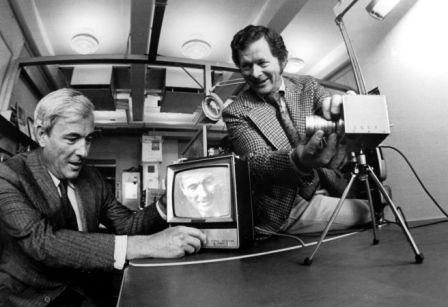
Photo provided by Bell-Labs
Willard Boyle and George Smith have been awarded the Nobel Prize for Physics for 2009.
What could that possibly have to do with a photography studio? Why does it merit a few minutes of my time to blog on the subject? Boyle and Smith are the inventors of a crucial piece of technology used every day in our studio.
In 1969 Willard S. Boyle and George E. Smith invented the first successful imaging technology using a digital sensor, a CCD (Charge-Coupled Device).
The CCD is the digital camera’s electronic eye. With the CCD, light can be captured electronically instead of on film. It revolutionized both amateur and professional photography.
The CCD and its more recent cousin CMOS (complimentary metal-oxide-semiconductor) use an array of millions of tiny photo sensors. Each sensor creates an electrical current when exposed to light. The strength of the current is proportional to the brightness of the light.
The CCD technology makes practical use of the photoelectric effect, as theorized by Albert Einstein almost 90 years ago. Through this effect, light is transformed into electric signals. The challenge when designing an image sensor was to gather and read out the signals in a large number of image points, or pixels, in a short time. That is where Boyle and Smith made their historic contribution.
Starting in 1999, after 40 years of capturing photos on film, the introduction of the CCD and digital photography allowed us to capture photos as digital files for the first time. The benefits from the technology have been dramatic to us and our clients. The added quickness and efficiency from capture to usage and the ease of making changes after the shutter release are both important improvements are both important transformation. However, the ability for the photographer and client to examine a shot at high definition on a computer screen – during a shoot – has proved to be the most revolutionary change and resulted in a much better chance at perfection.







